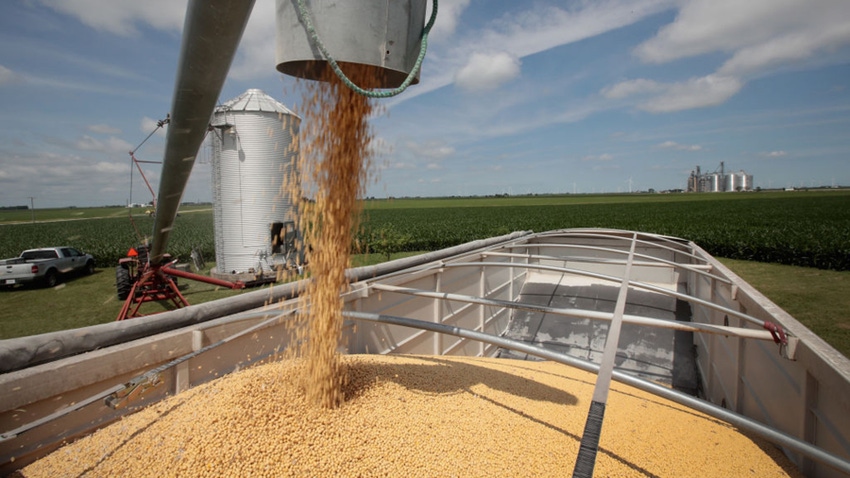
Trying to grasp potential soybean price movement for the month of October may prove challenging as early U.S. soybean yield results are coming in extremely variable due to the dramatic weather most of the Midwest saw this summer.
Intense heat, missed rains for portions of the Midwest, and timely rains for other portions of the Midwest make understanding the size and total supply of the U.S. soybean crop hard to get a handle on.
Yet one thing remains fairly certain; soybean futures overall remain fundamentally well supported due to three years of continued tight supplies in the United States.
What’s happened
Soybean futures have endured a rollercoaster this summer. The threat of dry weather sent futures prices soaring $1.00 higher in July. Then scattered rainfall forecasts for portions of the Midwest sent prices $1.00 lower in early August.
The whipsaw price action continued again in late August as a lack of rain and intense heat once again allowed soybean futures to climb $1.00 higher, only to have that $1.00 price gain be lost yet again throughout most of September.
Looking ahead to USDA’s Oct. 12 WASDE report, many traders will be eager to see if there will be any adjustments made to soybean yield and demand, and ultimately what that will mean to ending stocks for the 2023-24 crop year.
From marketing perspective
Looking at ending stocks is a way to quickly measure how much supply of a commodity is left over – or expected to be left over – after any crop year. If the perception is that ending stocks are getting larger, then that usually leads to commodity prices falling lower. If the perception is that ending stocks are getting smaller, then that oftentimes may contribute to an increase in commodity prices.
Ending stocks on upcoming USDA reports
On Sept. 29, USDA will post a Quarterly Stocks report for grains. When thinking about soybeans, this report will show an important understanding of old crop ending stocks.
On this report, USDA will report ending stocks of soybeans as of Sept. 1 for the 2022/23 crop year. The average pre-report guesstimate for the Quarterly Stocks report is coming in near 244 million bushels (with a wide range of estimates between 216 million bushels to 270 million bushels).
According to the most recent September 12 WASDE report, USDA projected soybean ending stocks for the 2023/24 new crop year already pegged at a small 220 million bushels, down from the 250 million number from the 2022/23 crop year. This is also substantially lower than the 274 million bushel number from the 2021/22 crop year.
Taking the significance of ending stocks one step further is understanding the importance of the “stocks-to-use ratio.”
Calculate ending stocks-to-use percentage and its importance
When you compare both the ending stock, along with the stocks-to-use ratio against previous years, this percentage number is a fantastic indicator of whether current ending stock levels are at historically small amounts (and justification for higher prices) or plentiful amounts (often when prices move lower).
To calculate the stocks-to-use ratio, take the ending stock number, and then divide that by the total demand usage number (provided on the monthly USDA reports), which can then be articulated as a percentage.
Currently, the stocks-to-use ratio for the new crop 2023-24 soybean crop is significantly tight, coming in at 5.2%, which justifies the overall historically higher soybean futures prices.

From a seasonal perspective
As harvest has begun, traders will also be looking for the “harvest low” for the soybean market. It is important to also be aware of a seasonal price pattern for soybean futures that may occur in early October.
As you know, past performance is not indicative of future results, yet looking at both the five and fifteen year price patterns, there is often a price bump higher in early October for soybean futures prices as harvest gets underway.

Prepare yourself
The upcoming USDA reports will be of utmost importance to know where both old crop and new crop ending stocks will be. This will likely then help set the tone for soybean futures prices for the remainder of 2023 and early 2024.
The soybean market is fundamentally well supported for now, due to tight supplies and uncertainty surrounding yields. The bottom line is that U.S. supplies of soybeans look to be snug until harvest of 2024.
While many questions will swirl regarding demand, especially on the export front with increased competition from South America, there will also be increased domestic demand in the United States now that additional soybean processing facilities are coming online across the Midwest for the booming renewable fuels industry.
There will likely be further price swings in the coming weeks and months that may create marketing opportunities to capture, and price risk to manage. Remain diligent and aware of fundamental, seasonal, and technical action and the pricing opportunities that may come in the coming weeks. It can be easy to be distracted about grain marketing as you will be busy with harvest, but this is one year where you’ll want to pay attention.
About the Author(s)
You May Also Like






